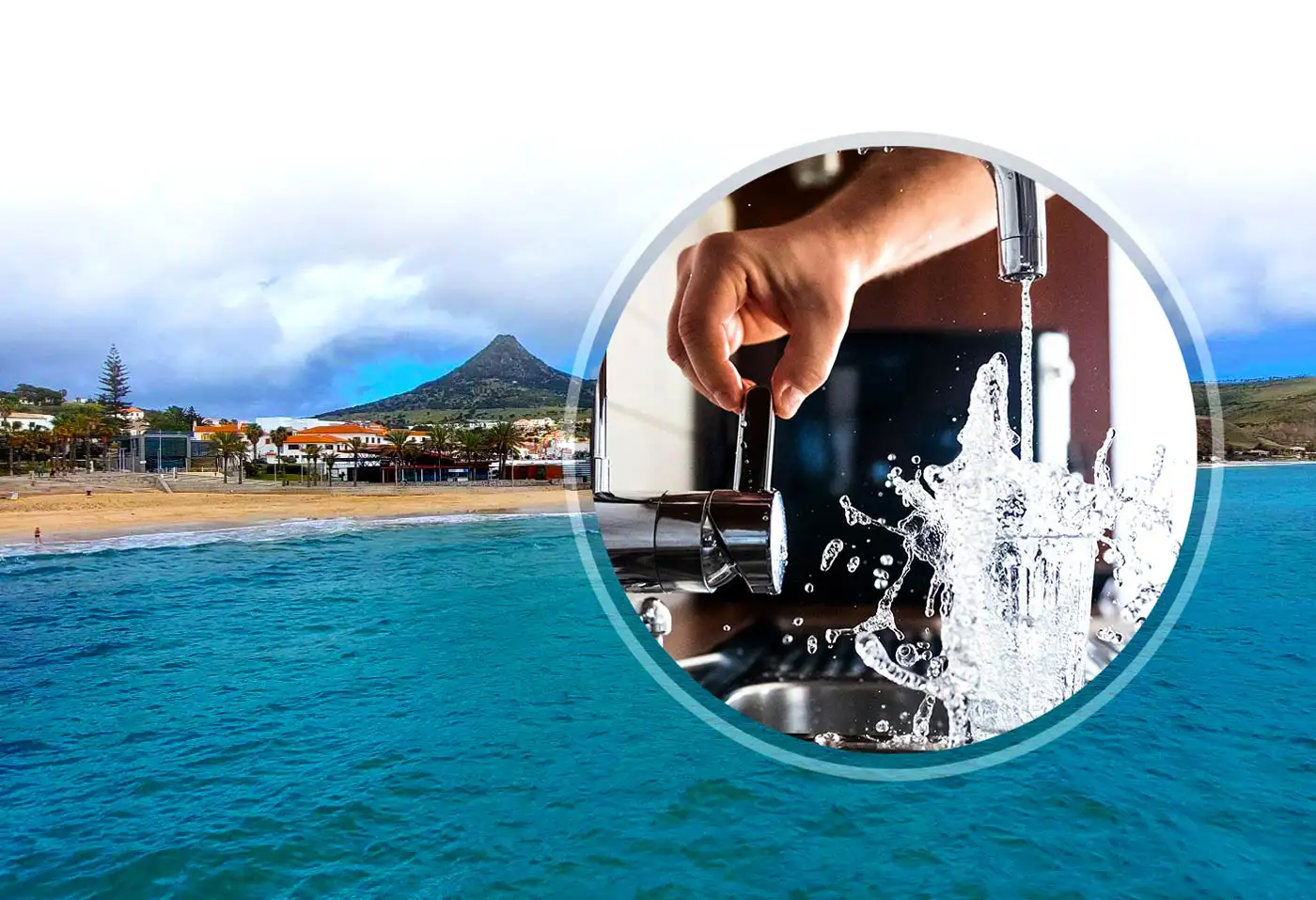No Rivers, Little Rain: How Porto Santo Lived Without Reliable Water
While 97.5% of Earth’s water is salty and undrinkable, desalination technology allows us to tap into this vast resource, making oceans a potential reservoir for fresh water. On Porto Santo, water was until the late 1970s, a rare and unreliable resource. With little rainfall and no natural freshwater rivers or lakes, the island faced chronic water scarcity.
Businesses and residents depended on rainwater cisterns, limited shallow wells, and occasional shipments from Madeira during droughts. These sources were unreliable and insufficient, especially with rising tourism and population growth. The lack of freshwater threatened economic development and public health.
An Island’s Answer to Water Scarcity: The Most Advanced Desalination Plant in the World
The island thus faced a serious challenge. The question at hand: how to provide enough clean drinking water for its people and the growing tourism sector? The ocean, once an obstacle, became the solution. In 1980, Porto Santo turned to innovation and launched one of the world’s leading desalination plants.
A Vision Born in the 1970s
The decision to build a desalination plant came at the end of the 1970s, driven by rising demand and worsening droughts. With the local population increasing and more tourists arriving, the Regional Government of Madeira made a bold move. They chose to invest in a reverse osmosis system - a relatively new and experimental technology at the time. The Porto Santo plant became not only the first of its kind in Portugal, but also one of the first five plants in the world to use this method.
Reverse Osmosis: A Clever Solution
Reverse osmosis works by forcing seawater through a special membrane that filters out salt and other particles. The result is drinkable water. Back then, most desalination systems used thermal methods, which boiled seawater to separate the salt. But those required more energy - something Porto Santo couldn’t provide in large amounts. Reverse osmosis was not only more efficient but also made it possible to operate the plant with the limited electricity available on the island.
Fresh Drinking Water for 20,000 People
The water is collected through tunnels built under the beach, about 80 meters from the shore and 10 meters below the surface. This system, created by the plant's engineers, filters the water naturally through layers of rock and sand before it even enters the plant. Because of this, the seawater arrives nearly free of bacteria and needs only minimal filtration.
The plant started with a modest output of 500 cubic meters of water per day. Today, it can produce up to 6,500 cubic meters daily - enough for the island’s 5,000 residents, plus the extra 15,000 people who visit in the summer.
One Source, One Solution: A Question of Survival
Porto Santo depends entirely on this desalination system for all its drinking water and most agricultural use. There are no other significant sources of freshwater on the island. Without the plant, daily life and economic growth - especially through tourism - would be impossible. As Nuno Pereira, one of the directors at Águas e Resíduos da Madeira (ARM), explained, this was “a question of survival” when it opened.
Several Upgrades and Improvements Over Time
Over the years, the plant has been upgraded and improved. It was also the first to use a Pelton turbine energy recovery system. This innovation, which recycles energy used in the desalination process, became a standard around the world. It cuts energy waste by up to 40 percent. The plant now uses about 3.5 kilowatt-hours of energy for every cubic meter of water produced.
Desalination Is Expensive
The current cost of producing one cubic meter of water on Porto Santo is around €0.65 - with electricity alone accounting for about €0.50. By comparison, on Madeira Island, which does not rely on desalination, the cost is just €0.12 per cubic meter.
Challenges Behind Clean Water
Desalination is not without its problems. For every 100 liters of seawater, only 45 liters become fresh water. The rest - a salty waste called brine - goes back into the ocean. This brine contains high levels of salt and sometimes chemicals like chlorine or copper, but also valuable minerals. If not handled carefully, brine can harm marine life by lowering oxygen levels and changing water temperature and salinity near the coast.
Although the plant’s managers insist that current levels of discharge do not damage the local environment, the issue remains a concern for environmental groups worldwide.
Technology Meets Necessity
Today, the Porto Santo plant is fully automated and run by just eight technicians. It is considered “state of the art” by engineers and water management experts alike. A new intake gallery is planned, adding to the four already in use. This will help meet growing demand and allow more flexibility in operation.
A Future Rooted in Water
More than 40 years after it opened, the desalination plant continues to be a key part of life on Porto Santo. It is not just a machine that turns seawater into drinking water - it’s a symbol of innovation, persistence, and practical problem-solving. While discussions about desalination are still ongoing in mainland Portugal, Porto Santo stands as a living example of how this technology can support an entire island, if done with care and planning.
See also for further reading:








Comments